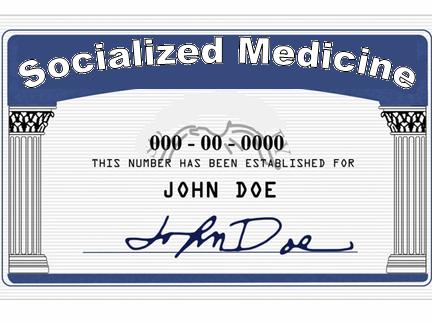Patients may start having to pay more money out of pocket for health care if they do not pay attention to their insurers’ pricing policies.
As health costs have continued to rise, private insurance providers have looked closely at any areas where they can cut costs. One of the easiest avenues to lowering costs is for these insurers to lower their out-of-network payments, as Aetna began doing in 2009, shifting their payment rates to resemble those paid by Medicare.
For individuals in plans where payment rates are shifted in such a manner, the cost for medical services received by out-of-network providers may be much higher than in the past.
De Facto Nationalization
According to Devon Herrick, a senior fellow for the National Center for Policy Analysis, the increased reliance on Medicare rates is further reducing the differences between private and public insurance payments and coverage.
“Private insurers have always looked to Medicare for guidance. If Medicare refuses to cover a given treatment, private insurers often refuse cover it,” Herrick said. “If other insurers follow suit, this practice could easily become commonplace. Medicare pays doctors 81 percent of what private insurers typically pay. Medicare fees are similar to the cost-sharing many insurers require for out-of-network providers.”
Increases Hospital Footprint
Merrill Matthews, a resident scholar with the Institute for Policy Innovation, says this shift is one reason why more doctors are taking jobs in large hospitals.
“If insurers do move in this direction, it will increase the importance of their networks of physicians, because that’s the only way patients know they will get the discounted price,” explains Matthews. “Of course, more and more doctors are taking jobs with hospitals. That trend, if it continues, might diminish the practice, because physicians will likely fall under the hospital’s contract with the insurers.”
Matthews maintains this shift illustrates the growing role of Medicare’s price controls.
“The practice highlights the disparity between what physicians claim is their standard charge and the negotiated price for those in an insurer’s network. Those differences can be steep,” Matthews said. “Insurers can make a reasonable case that paying Medicare rates plus, say 10 percent or 20 percent, is a fair reimbursement: ‘Isn’t that what the government pays?’ Many physicians will disagree.
“When the government imposes price controls on a large swath of a population, in this case patients, no one should be surprised if insurers begin using those lower prices as a basis for their own reimbursements,” Matthews explains.
Limiting Consumer Choice
Michael Cannon, director of health policy studies at the Cato Institute, says the decision insurers are making is logical given their options.
“Generally I don’t think there is anything wrong with insurers using Medicare prices to either set in-network or out-of-network rates, because it is not coercive when private insurance companies use the Medicare prices any more than it would be coercive if they used a bunch of numbers written in Egyptian hieroglyphics,” Cannon said.
Cannon says the ideal solution—more consumer choice—is unlikely to come into play.
“Ideally, consumers would be able to choose insurance plans based on how much they pay in-network providers and out-of-network providers, because that will determine how much access they have to each type of provider and how much out-of-pocket expose they will face,” Cannon said. “But instead of giving consumers that choice, what Obamacare is going to do is encourage state and federal governments to regulate these features of health plans even more.”
Growing Trend
Cannon expects more insurance companies to switch to this payment method in the future.
“They are switching to various measures to try to hold down premiums. I expect them to pay out of network providers less,” answers Cannon. “Is it a good policy? That depends on whether if you prefer access to out of network doctors or lower premiums. If you prefer lower premiums, it is a good policy; but if you want the out of network doctors and less out of pocket exposure, then it isn’t.”
Cannon says this move won’t help halt rising premium costs in the long term.
“Health insurance premiums are continuing to rise, even though Obamacare was supposed save us from that. This payment rate shift is how markets are supposed to respond to increasing costs—by taking steps that will guide patients to lower the cost of care, in this case in-network providers,” Cannon said. “Insurers are looking for ways to control premium increases. And they really want patients staying in the negotiated network of providers. Adopting a Medicare-plus reimbursement will accomplish both goals.”
More Problems for Medicare
This shift could portend additional problems stemming from Medicare reimbursement rates down the road.
“Unfortunately, Medicare’s price controls are causing all sorts of problems within Medicare. While politicians will respond to that, we aren’t going to respond to the consumers who are captive in plans their employers offer them, which are even more heavily regulated under Obamacare,” Cannon said.
Matthews agrees.
“Doctors complain that Medicare doesn’t pay enough and are increasingly declining to take new Medicare patients. If insurers begin reflecting Medicare rates, even more doctors may look for an alternative, such as moving to a cash-only practice or retiring, exacerbating the growing difficulty in finding a physician,” Matthews said.













